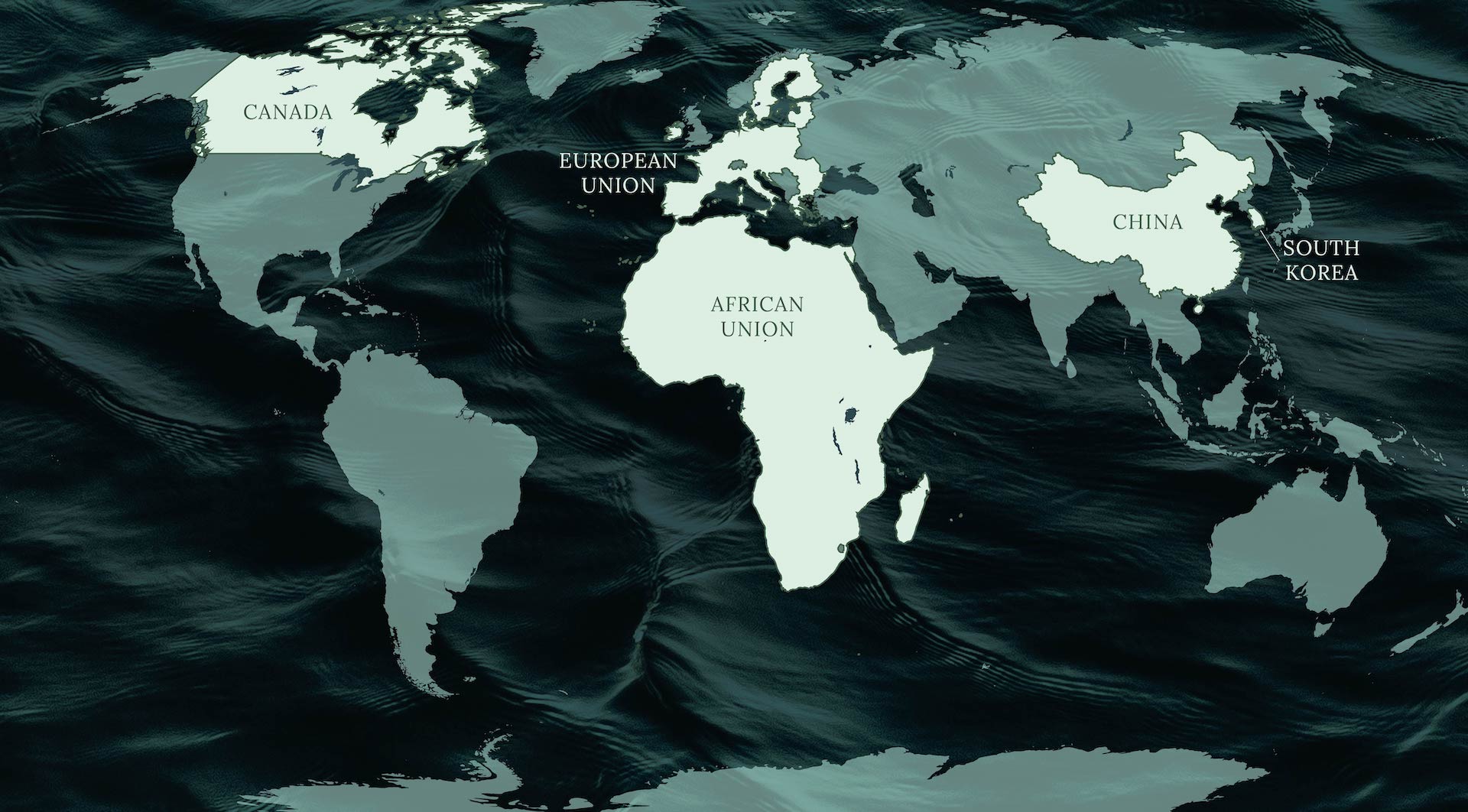The Covid-19 pandemic is taking an immense toll on our country. With 1.8 million cases and counting, the U.S. has more coronavirus victims than any other nation in the world. On top of this health crisis, unemployment rates hit at an all time high of 14.7% in April, the worst our country has seen since the Great Depression. Many experts estimate that this number will continue to grow higher, with projections as high as 30%, especially considering the vast number of unemployed Americans who have yet to file for unemployment.
That’s terrifying. We are living in unprecedented times, and the future feels more and more uncertain every day. But, this pandemic also offers immense opportunities for positive change.
These are stressful times, so be mindful to take care of your physical and mental health as you are able. Staying informed, and keeping a clear head is critically important. Here are some things you can do to stay healthy, and remember to check in on loved ones, and neighbors.
It’s going to take a massive government stimulus to revive our economy. Congress has already allocated billions of dollars towards solving this crisis, but economists estimate that this is not nearly enough. As the government begins to discuss additional economic relief packages, we must use this moment as an opportunity to direct funding in a way that not only addresses the issues of today, but also leaves us better prepared for another enormous, looming crisis — the climate crisis.
Investing in green infrastructure can not only make us more resilient to current and future climate impacts, but has actually been shown to yield more jobs in the short term as well. A 2011 World Bank study found that every $1 million invested in oil and gas created 5 jobs; while the same investment when directed towards clean energy solutions amounted to much higher job creation: mass transit creates 22 jobs, energy-saving building retrofits creates 17 jobs, solar energy results in 14 jobs, and wind energy in 13 jobs. In fact, the success of clean energy investments has already been proven in the federal government’s response to the 2008 recession — Obama’s Recovery Act created 900,000 jobs in clean industries between 2009 and 2015. Clearly, renewable investments have far greater potential to provide well-payed, decent jobs for the 40 million Americans currently out of work.
Climate XChange will be releasing state-level reports examining the job creation potential and massive public health benefits of green stimulus packages. Learn more at our Research & Policy Design page.
Countries around the world are already beginning to understand this need and to take advantage of these opportunities, and some federal U.S. proposals are beginning to include provisions that would provide investments in clean energy and jobs as well. If we expect our economy to remain a leader globally after this pandemic, it is important that these measures are fought for and included. Looking at these policies in other countries, which are steps ahead of us in the pandemic response process, can teach us a lot about how the U.S. should focus our stimulus spending. South Korea, The European Union, and other European countries already released official plans to incorporate green investment into their stimulus spending, and many other countries are in the midst of discussing similar green recovery packages. We’ve examined some of the most exciting plans from around the world here.
Where have plans already been released?

South Korea’s Green New Deal
South Korea’s Covid-19 stimulus response exemplifies what a green recovery can look like here in the U.S.
South Korea’s quick response to the coronavirus pandemic proved that the nation has the skills to mobilize in order to solve a crisis. With a death toll below 200, and increasing cases less than 100 a day since the end of March, South Korea successfully flattened the virus curve. President Moon Jae-in, leader of the South Korean Democratic Party, has been a key figure in coordinating a national response to the pandemic, gaining praise internationally for his swift action.
In March, President Moon’s Democratic Party published a climate manifesto, known as the Green New Deal, promising to restimulate the South Korean economy while simultaneously transitioning towards decreased fossil fuel dependency if he were to be re-elected. His landslide win in April, secured with unprecedented voter turnout, resulted in an absolute majority for his party in the legislature. This gives Moon an unmistakable mandate to use South Korea’s economic recession to bring the economy into a cleaner era.
Read More
“The thinking is that maybe we can do better in other things as well, not just COVID-19. There’s a lot of potential for a renewables industry,” said Daul Jang, a senior campaigner at Greenpeace East Asia.
This is certainly not going to be an easy feat. South Korea is currently the world’s seventh-highest source of carbon emissions despite its small size, with coal accounting for 40% of the country’s energy. The country is also one of the largest investors in foreign coal in the world — between 2016 and 2017 alone, it funded more than $1.1 billion in coal investments overseas. It’s existing plan within the Paris Climate Agreement would reduce emissions by only 37% below business-as-usual projections by 2030, deemed “highly insufficient” by the Climate Action Tracker.
But their Green New Deal offers a new path forward, and with it South Korea has become the first East Asian country to commit to carbon neutrality by 2050. The plan also includes phasing out coal production and overseas investments in coal, as well as making massive wind and solar energy investments, establishing job training programs to transition fossil fuel workers towards renewable jobs, and putting a price on carbon pollution.
This Green New Deal will allow South Korea to enter the post-Covid world as an economic and ideological leader, spurring recovery and growth, and combating climate change all at once.

The EU jumps on the opportunity to “prepare for the future”
After unveiling their own Green New Deal last December, it is not surprising that the European Union’s €750 billion ($826 billion) COVID recovery package includes immense funding efforts to support a just transition away from fossil fuels in order to meet their goal of carbon neutrality by 2050. The announcement comes in tandem with the promise that 25% of EU funding will be dedicated to climate resilience and adaptation measures between 2021 and 2027.
“We need to be very resolute in our response to this crisis,” said European Commission President Ursula von der Leyen, “but we must do it in such a way that we prepare for the future.”
The plan includes available grants and loans to every EU member state, with extra stimulus for some of the economies hit the hardest by the pandemic, including Italy and Spain. Germany and France have been very supportive of the measure, despite Germany’s history of being opposed to jointly issued debt.
Read More
A big chunk of the plan would be paid for by increased (and new) prices on carbon pollution, as well as a newly devised carbon border adjustment mechanism, which would put a carbon price on imports from other countries coming into the EU.
The recovery package specifically allocates:
- €560 billion ($623 billion) to a Recovery and Resilience Facility that focuses on “green and digital transitions and the resilience of national economies.”
- €40 billion ($44.5 billion) allocated to a Just Transition Fund that can be used explicitly for measures that make an equitable transition towards a carbon free economy.
- €15 billion ($16.7 billion) for the European Agricultural Fund for Rural Development, which will be used to support agricultural communities in their transition away from fossil fuels, and to ensure they have the resources to make the structural changes necessary to do so.
- €94.4 billion ($105 billion) to Horizon Europe, a program that will fund research in health, resilience and a green transition.
While the proposal still needs to pass through the European parliament, as well as individual parliaments within member states, widespread support for it would suggest great hope for its eventual implementation. Large corporations have been quick to jump on board with the proposal; in fact, 68 businesses recently signed a pledge calling on the EU and member states to target climate investments through stimulus packages.
The business coalition wrote that “the planned medium and longer-term economic aid measures must not only provide an economic stimulus, but also contribute to our common goal: a resilient economy and society that achieves climate neutrality through a high level of innovation and competitiveness.”
With the release of this proposal, it is clear that the EU understands the lengths to which governments will need to focus on green solutions if they hope to restimulate their economies without further causing environmental degradation and worsening public health effects. Some of the largest EU economies, such as Germany, France, Spain, and Italy, have also doubled down on climate in their individual stimulus efforts, expressing their full support for the EU plan.
Germany and France both have Covid-19 response plans to boost electric vehicle sales, improve energy efficiency measures, and enhance public transit options, and are viewing the current crisis as an opportunity to meet the European Union’s target to be carbon neutral by 2050. Similarly, Spain has pledged to create 350,000 green jobs per year with its economic stimulus efforts, and Italy is using the pandemic as an opportunity to restructure its largest cities, making biking and pedestrian access more available. Countries across the European Union are stepping up, paving the way for nations around the world to as well.
Green recovery plans in the works

In Canada, COVID serves as a “wake up call”
Similar to the EU, Canada committed in December to reaching the ambitious goal of net zero carbon emissions by 2050, and plans to use the current economic crisis as an opportunity to meet those targets while also stimulating the economy.
“It’s a wake-up call that as governments invest in the economic recovery, they need to be thinking about the level of systemic change that we’re aiming for it,” said Kathryn Harrison, professor of political science at the University of British Columbia, who is adamant that a green stimulus is the most cost-effective solution to the economic crisis.
Already, components of the Canadian response to the economic crisis take climate into account. Any large business that takes a government loan is required to submit annual climate disclosure reports and commit to making more sustainable business decisions. Justin Trudeau’s administration is blocking requests made by big oil and gas corporations to suspend environmental regulations in the wake of the pandemic, a stark contrast from the U.S. where the Trump administration happily rolled back environmental policies to bail out the fossil fuel industry when coronavirus first hit. The money that Canadian oil and gas corporations did receive as a part of the first coronavirus response package was also directed to be used to reduce methane and to clean contaminated oil and gas wells.
Read More
These steps in early Canadian economic “rescue” packages suggest that when the government is ready to pass a full economic “recovery” package, climate investments will be a major focus. Already, it’s been announced that cabinet ministers Steven Guilbeault, Catherine McKenna, and Jonathan Wilkinson (the past, current, and possibly future ministers of the environment) are working to create “an economic recovery plan that aims to accelerate the green shift.” They are currently in an informal stakeholder engagement process, which will likely become formalized at the executive level soon.
There is also an important component of the Canadian green recovery that emphasizes resiliency. The plan makes clear how important it is that the government learn from their experience handling the coronavirus crisis in order to better prepare for future crises — a lesson that the U.S. must also internalize.
“We’ve been through a crisis, which compared to other viruses or climate change, is not that big. Yet, our economy and our society had a very hard time reacting to it, and being resilient. So, we must turn the conversation towards the resilience of our economy and our society, and focus on well-being,” a Canadian senior government official told Climate XChange.
“We have to make sure we don’t run out of essential goods if there is a crisis, or overly depend upon other nations if something happens, especially for key aspects of our economy like energy and food and healthcare equipment.” Using their response to the Covid-19 pandemic to ensure resiliency on all fronts, including climate, will be key in the Canadian response.
Although they are still early in the process, by choosing environmental officials to spearhead the covid recovery act, Canada is clearly on the right track towards a green recovery that will foster a better future for their citizens while also reviving their economy.

The African Union focuses its efforts on renewables
The African Union Commission, representing its 55 member states, also announced its intention to focus its coronavirus response on green initiatives in collaboration with the International Renewable Energy Agency.
In particular, the goal is to focus the response on providing renewable energy to health centers and rural communities. More than 600 million individuals living on the continent currently lack adequate energy services, and many health centers also face challenges with electricity access. The African Union plans to provide sustainable power sources to as many as they can, which will not only benefit the public health response to the coronavirus crisis by powering medical equipment and increasing water pumping capacities, but will also help communities leap-frog to renewable energy sources, rather than building out infrastructure for fossil fuels.
H.E. Dr. Amani Abou-Zeid, Commissioner for Infrastructure and Energy of the African Union, said that, “The COVID-19 pandemic has shown that energy is critical for all spheres of life and is now proving to be a matter of survival. The African Union Commission has made major strides to advance energy development in Africa through various programmes and partnerships. It is now even more urgent to fast track energy access efforts on the continent.”
Read More
Although the African continent contributes little to the causes of climate change (the entire continent of Africa produces just over one metric ton of carbon dioxide per person annually, while the U.S. alone produces 16 metric tons per person), it is disproportionately affected by climate impacts. Already, various countries in Africa have experienced intense storms and droughts that have disrupted food security and general safety; extreme heat and air pollutants have affected the health of many; and flooding, which has ruined many homes and businesses. These climate-driven horrors are only expected to get worse over time.
The African Union’s commitment to use their coronavirus response to spur renewable energy production is an example to the U.S. and countries across the world in guiding investments into the clean energies of the future. Especially for countries such as the U.S. which carry heavy carbon footprints, and contribute tremendously to the causes of global climate impacts, it is critical to use this moment to direct investments that prepare us for the future.

China, the world’s largest polluter, discusses green recovery
Although China emits more carbon pollution than any other country on Earth, even Xi Jinping’s administration is in the midst of discussing green stimulus options.
The Politburo Standing Committee, which Xi Jinping himself is in charge of, has already determined that the road to recovery includes massive investments in low-carbon transport and energy — what the Chinese call “new infrastructure production.” Between 2020 and 2025, China is already committing 10 trillion RMB ($1.4 trillion) towards this type of infrastructure, with their high-speed rail receiving the largest allocation of funding, setting the country up for a shift to low-carbon dependence.
Although China is certainly including green stimulus into the recovery conversation, it is too early to tell if its plan will make any legitimate environmental impact. The fact that they are having these conversations at the executive level is in itself, one step farther than the U.S. has taken at this point.
Read More
This certainly does not make China a climate champion — although many of their environmental policies attempt to reduce emissions, they clearly lack an important justice component, and are often worse for Chinese nationals in the short-term. For example, an attempt in 2018 to reduce air pollution and move to clean energy caused fuel demand for renewables to surge quickly without any government control, which left millions of low-income people without heat in the freezing winter.
China also still invests heavily in “old infrastructure” — they loosened regulations on coal manufacturers this past February, and there are still plans in the works across the country to build more coal plants.
Returning to a better world
As we begin the conversation in the U.S. about reopening our economy, many leaders and citizens alike have wondered what a return to “normal” might look like; but “normal” before the Covid-19 pandemic was far from perfect. In the past decade alone, the U.S. has emitted 58,396 million metric tons of carbon dioxide into our air, worsening public health inequalities and causing increased natural disasters. Although the coronavirus has resulted in a temporary decrease in emissions, as soon as we return to “normal,” these reductions will become negligible.
Instead of returning to “normal,” what if we used the Covid pandemic as an opportunity to change some of our broken systems, to make our economy more energy independent, more resilient, and more equitable?
Frans Timmermans, the European commission vice-president who oversees the European Green New Deal, brought up the existential question that all governments are now facing, “Do we rebuild what we have before or do we seize the opportunity to restructure and create different and new jobs?”
U.S. civil society and businesses have emerged in support of a green recovery — in fact, a coalition of corporations worth more than $11.5 trillion, including Microsoft, Visa and Capital One, already lobbied congressional leaders from both parties to include climate change in the coronavirus recovery bills. Together, the corporations involved employ more than 3 million Americans.
The U.S. must follow the lead of other nations across the globe, and put money back into our economy that not only provides job opportunities and economic stimulus, but also leads a transition away from carbon dependency towards a cleaner, more equitable future. Businesses and citizens are already in support of these measures, and some policymakers are already working on this legislation — we now must ensure that there is political will to do so.
As Helen Mountford, Vice President of climate and economics at the World Resources Institute, said, “this is a chance for all countries to build back better, by providing greater access to clean energy and transport, healthy natural systems and also good quality jobs.”
How can you help? Contact your representatives to make sure they know you support green recovery measures, and be sure to register to vote in November!









